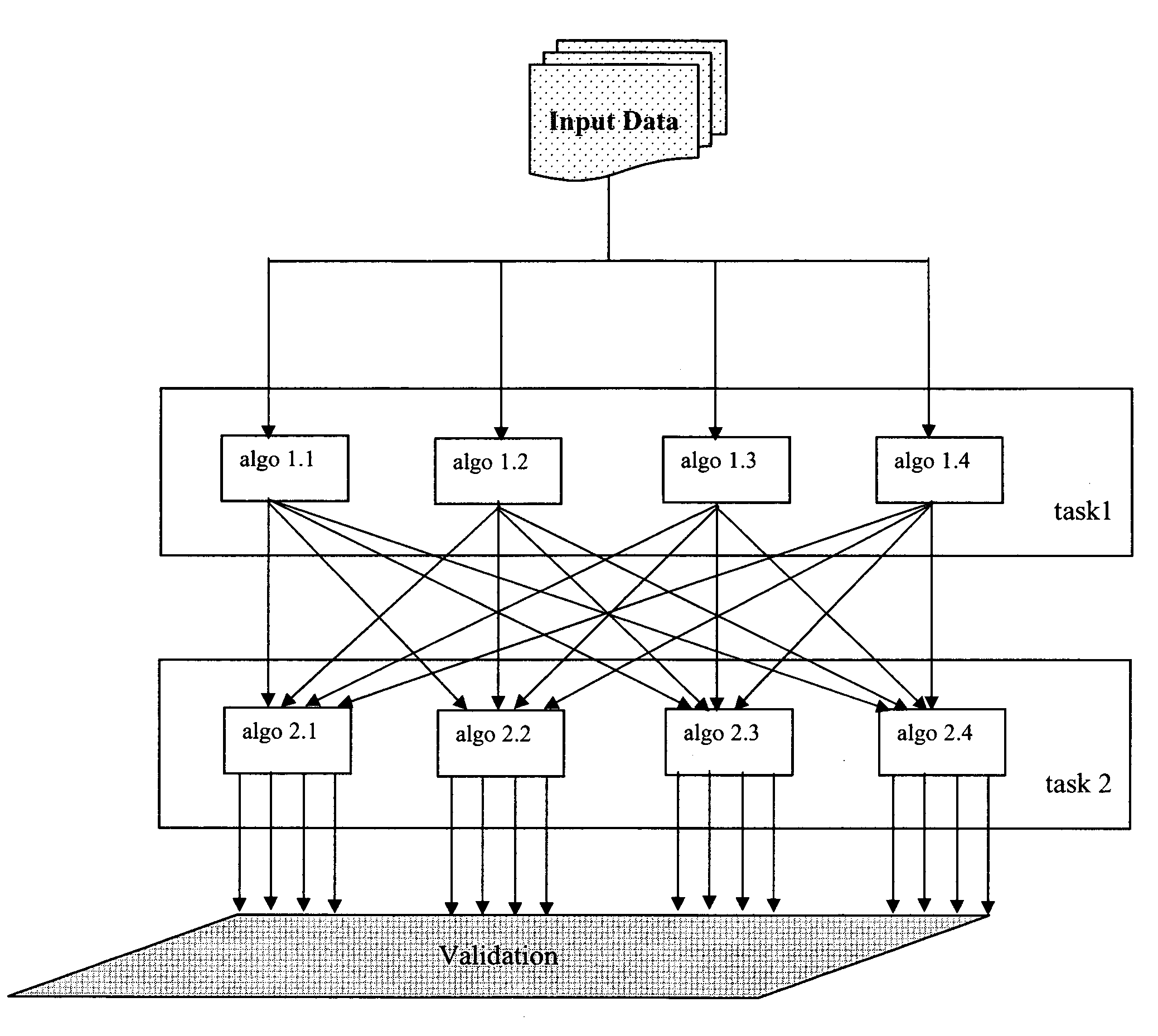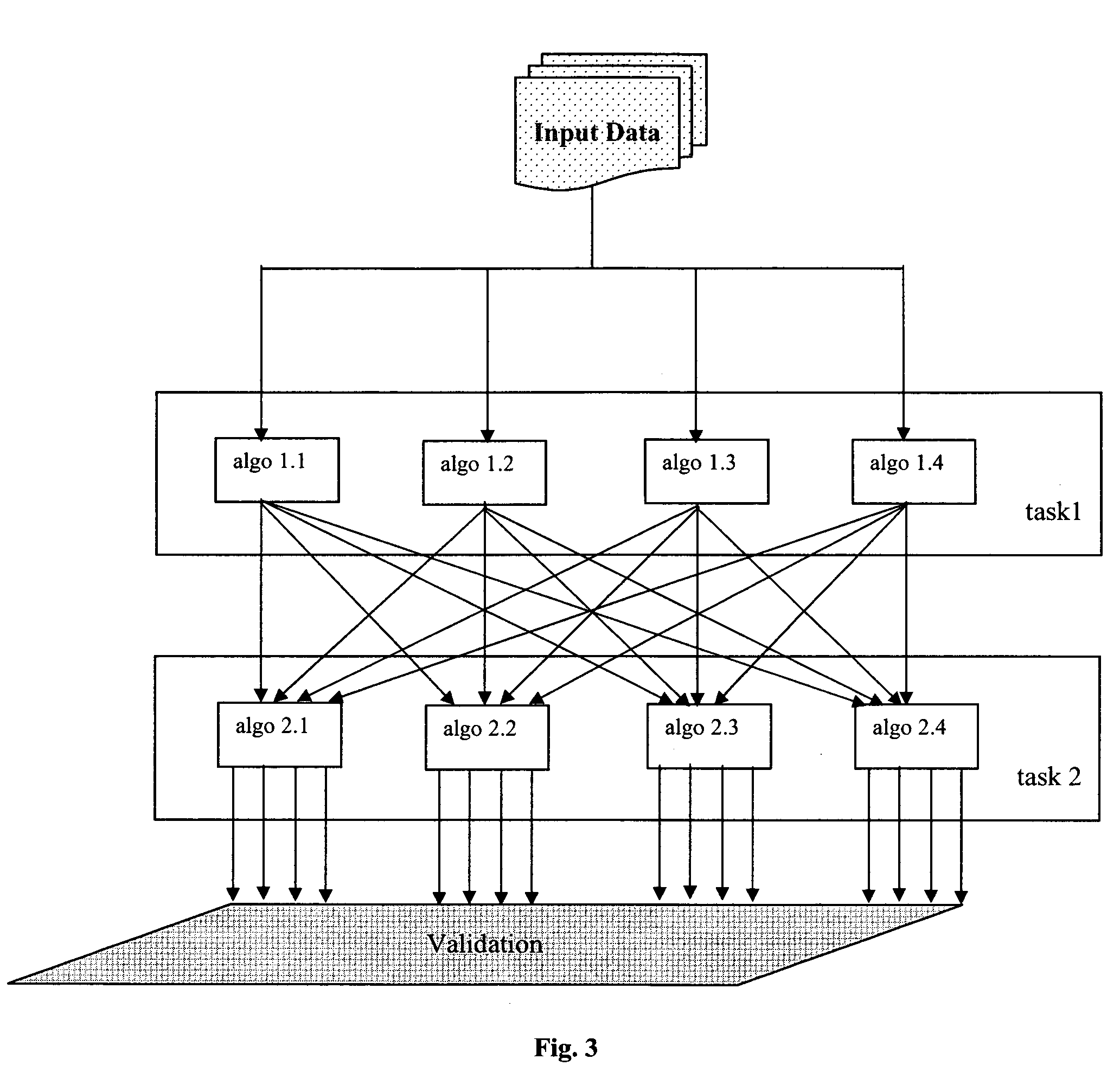Techniques to rate the validity of multiple methods to process multi-dimensional data
a multi-dimensional data and validity technology, applied in the field of system for rating the validity of different methods for processing data, can solve the problems of insufficient step, practically infeasible to implement such a pipeline, and hardly any single scheme that provides
- Summary
- Abstract
- Description
- Claims
- Application Information
AI Technical Summary
Problems solved by technology
Method used
Image
Examples
example 1
DeNoising One Dimensional Signal
The removal of noise from noisy data to obtain the unknown signal is referred to as denoising. This is a de facto preprocessing task applied on any 1 dimensional signal, 2D image or nD data. A number of methods are available to filter the noise. In general, Wavelet based methods have been found to yield good results. However, the different basis functions available in wavelet domain, the parameters associated with the different wavelet denoisers and the lack of tools to inspect the result in the wavelet domain has made the data-algorithm matching difficult to accomplish.
The Matlab wavelet toolbox demo on denoising was used. The signal was synthetically generated to mimic an ideal ECG (FIG. 7a). Additive random noise was added to this signal (FIG. 7b). Matlab function ‘wden’ that automatically denoises 1D signals was used to denoise. Algorithms using the principle of Stein's Unbiased Risk (rigrsure), heuristic version of Stein (heursure), universal thr...
example 2
The first body MRI image acquisition performed by “indomitable” on Jul. 2, 1977 took four hours and forty-five minutes. In 2001, a similar whole body MR imaging could be accomplished in thirty seconds. Parallel computing, Parallel hardwires (coils) and better understanding and exploitation of the Fourier space have made this quantum leap possible. Sensitivity encoding (SENSE), Pruessmann K. P. et al. “SENSE: Sensitivity encoding for fast MRI”Magm. Reson Med, 1999; 42:952-962, is a good for this. In SENSE, multiple receiver coils are used and each receiver coil receives a different signal voltage from the imaged object based on the position of the receiver coil relative to the object. Computational algorithms can use these differences in signal voltage to subtract the aliasing effect and create a whole image. The result of SENSE is the acquisition of a unaliased image with only half the k-space data, and therefore, half the time. The disadvantage is the decrease i...
example 3
Projection Reconstruction Techniques
The method most universally used at present to invert and solve the classical “projection formula” to reconstruct CT, PET, SPECT and sometimes Ultrasound and MRI is either the Fourier transform method or the convolution or the filtered back projection (FBP) method. FBP is an extension of the simple back projection technique. Extensions include prefiltering to correct the blurring problem and an interpolation scheme for sampling on the grid. There are a number of options to perform the filtering and the interpolation. Depending on the choice made, the results can be different. Hence there is a need to rate and order different results.
The Matlab radon and iradon functions to reconstruct the commonly used Shepp-Logan phantom, Peter Toft, “The Radon Transform—Theory and Implementation”PhD. Thesis, Dept. of Mathematical Modelling, Technical University of Denmark, June 1996. Matlab function phantom was used to create the input data (FIG. 11a). Radon tra...
PUM
 Login to View More
Login to View More Abstract
Description
Claims
Application Information
 Login to View More
Login to View More - R&D
- Intellectual Property
- Life Sciences
- Materials
- Tech Scout
- Unparalleled Data Quality
- Higher Quality Content
- 60% Fewer Hallucinations
Browse by: Latest US Patents, China's latest patents, Technical Efficacy Thesaurus, Application Domain, Technology Topic, Popular Technical Reports.
© 2025 PatSnap. All rights reserved.Legal|Privacy policy|Modern Slavery Act Transparency Statement|Sitemap|About US| Contact US: help@patsnap.com



